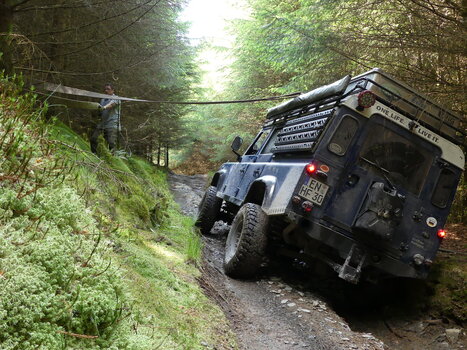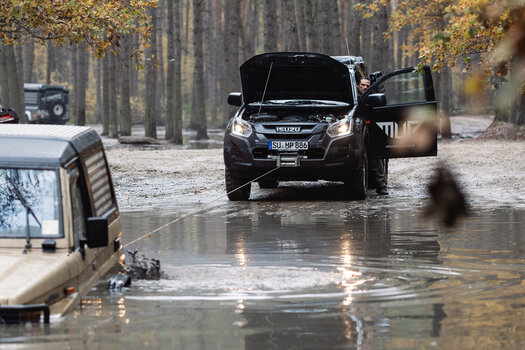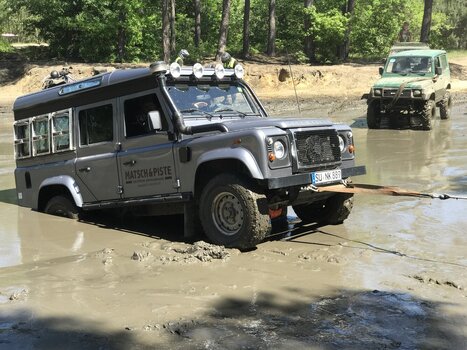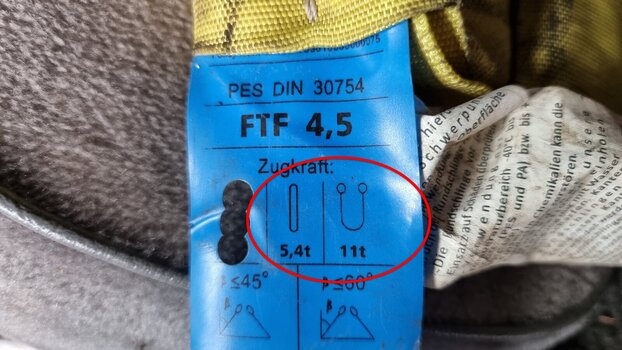My suggestions for recovery kits:
No winch:
1 x Kinetic rope (good for stucked cars and absolutely necessary for recovery in sand (desert))
1 x Static strap (only for recovery of cars which are not really stuck, but maybe can't move or are trapped on slippery ground (wet grass, not too deep mud). Dynamic recovery with a static rope is a no go, it creates too much stress in the ladder frame and to the recovery points, high risk of ripping the strap and snatching. It can also be used to secure a car which tends to roll over or slip away).
A selection of steel and soft shackles.
A shovel
With winch:
1 x pulley (three if you also want to pull the car sideways)
1 x Tree rope (for mounting the winch rope or the pulley)
2 x static straps or ropes (to create a V shaped mounting point in front of the car to equal the load left and right inserted into the ladder frame. The longer the V the more equal the load will be. Can be used to secure a car like mentioned above. One very long and broad rope can be used to easily keep a car from rolling over while on sloped ground by winding it 3/4 around a tree. The tree acts like a brake and while the car moves forward you give rope. When it will turn over the strap will be tightend and pulled againts the tree thereby applying braking force. There is not much weight to hold, just a few kg when the car has not turned over too much already, so that is a safe thing).

A selection of steel and soft shackles (at least 2, better 4 or 6)
1 x Kinetic rope (if sand driving is planned. A winch and a kinectic rope can do a great job when the car can't drive anymore in desert dunes. Depending on the actual situation you permanently have to change between the one and the other to get the car out.)
A shovel
Optional: brake shoes (you always have to shore up the load you will pull against the ground. That is the most fundamental thing. Brake shoes can support you here if the shape of the landscape doesn't.
Tips:
Whenever possible, get weight out of the car which is stuck. Try to create a ramp if you need to pull a car over a steep bank or step. That reduces the pulling load significantly. If you use a hook, always hook it up with the (don't know the term) secured mouth up. If the hook breakes it tends to snatch to the ground, not into the air). Pull as straight as possible. Always check the mount point at the car. When your gear is in good shape and not damaged, that is the point with the highest risk that something will break and things flying around. If you do not know the car, you may even want to reject from recovery. We pulled out a friends car once, with a good looking, heavy and trustworthy bumper. A few weeks later we removed the bumper and it was just hold by some remainings of steel and a lot of rust. We couldn't see that during the recovery and we were lucky that the bumper didn't come loose. Open the hood on the winch car for additional protection. Never use the recovery gear of others, you do not know the history of that and how it was (ab-)used. If the car is down to the ladder frame, a hand hoist could be very helpful. Take a tree rope around a tree about 2 meters high and attach it to the car which is stuck. Raise the car with that a few centimeters and pull it out then. Be aware the the hand hoist will come loose then. Not all trees can be used for that. It must be strong and thick enough and the bark must be rough. Whenever possible use a pulley, it saves energy, makes the recovery more precise and manageable and reduces load, stress and wear,

AWo







